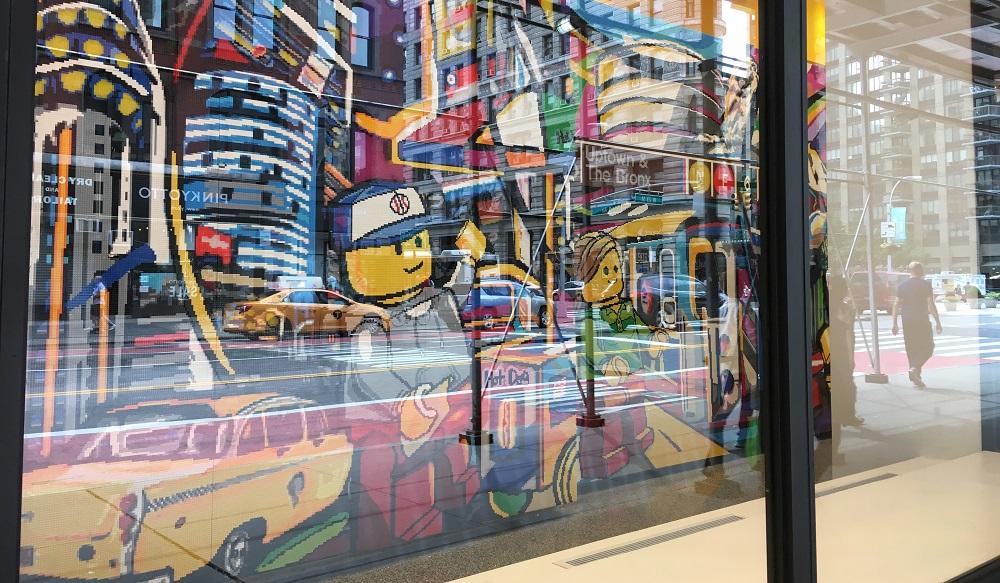At any given moment people experience multiple brands and their associated entities (e.g. products, services, retailers, places). While dining at a restaurant, you simultaneously experience the restaurant’s brand, the brand of salt on your table, the brand of wines on the menu and the brand of the city you find yourself in. You experience the brand of the phone that you check periodically throughout the night, the Apps you have downloaded and the various brands that infiltrate your social media feeds. Oh and, lets not forget, your personal brand.
From personal brandscapes to place brandscapes
We all adjust the personal meanings of the brands we experience.
Sherry (1998, p. 112) terms the material and symbolic environments that consumers build with marketplace products, images and messages brandscapes. He emphasises that the elements of each individual’s personal brandscape can develop totemic significance: adored, loved, even worshiped.
Can an appreciation of personal brandscapes assist place brand management?
In broad terms, the material and symbolic environments (i.e. brandscapes) that surround particular places can enhance the reputation, value proposition and meaning (i.e. brand) of those places. More specifically, place brandscapes offer the people who live, visit and work there unique and enriching experiences.
Manhattan epitomises a dense urban place brandscape. Almost every inch of this island is built up with multiple layers of diverse brands. Manhattan also illustrates how place brands interweave. For instance, we have the overarching ‘Manhattan’ brand, but think also of how areas such as Chinatown, SoHo and the Financial District each represent unique place brands.

In theory
The broad term ‘brandscapes’ has been applied and adapted to places in varying ways. Bellini and Pasquinelli (2016) develop the notion of ‘urban brandscapes’ as ecosystems of symbolic value made up of all the brands that are experienced when a person experiences an urban place. According to them, a range of brands (e.g. products, event, service, retail, institution, education, entertainment, media) support this ecosystem by projecting images and symbols within urban space (p. 13).
Place brands fuse with various other brands as part of a web of associations or ‘experiential platform’ (i.e. brandscape) (Bellini & Pasquinelli, 2016).
Engaging with place brandscapes in practice
Two key characteristics of place brandscapes could have direct implications for place brand management: (1) fluidity and (2) symbolic density.
With regards to fluidity, consider how the personal and political brands of Donald Trump and Hilary Clinton have infiltrated the United States nation brandscape leading up to the 2016 November election. Annual events such as the Tour de France also mould the brandscapes of various nations, cities and towns that host them.
Controlling or minimizing the fluidity of place brandscapes would be near impossible and potentially counterproductive given fluidity increases the likelihood of people experiencing unique combinations of brands while visiting or living in a place. Still, acknowledging the inherently fluid nature of place brandscapes and potential knock-on effects for place brand evolution is arguably fundamental to place brand management in the 21st century.

Fostering ‘dense’ place brandscapes also increases the ability of places to offer unique combinations or ‘fusions’ of brands that residents, tourists and investors simply cannot find anywhere else.
Initially, place brand managers may need to re-assess the strategic value of local stakeholders (e.g. entrepreneurs, artists) based on their symbolic contribution to the place brandscape. These re-assessments could lead to identification of stakeholders such as local cafés, farmers markets, independent designers and street buskers as vital place brand assets.
Although those in charge of place brand development and management may offer support in terms of skill development or funding behind-the-scenes, such local stakeholders and their respective brands may thrive best when left alone to ‘go about their business‘.
While all of this sounds simple enough, other issues and objectives can impede place brandscape density.
For instance, a local entrepreneur who wishes to open a small coffee shop may have to battle against parking restrictions, zoning and trading hour limitations to see his vision become a reality. Obviously, these regulations could service competing demands of other stakeholder groups (e.g. local residents who park outside the proposed coffee shop).
Still, engaging with the notion of brandscapes reinforces the importance of acknowledging that a small coffee shop could contribute significantly to the place brand by enhancing the place brandscape and thus, the entrepreneur’s proposal is worthy of further consideration.
Co-creating and guarding fluid and dense place brandscapes
More broadly then, assuming no viable competing demands, decisions made in the name of rich and variegated place brandscapes appear to embody strategic place branding.
Prioritising place brandscapes also appears to align with the conception of place branding as a process of co-creation where place brand managers assume the role of curators or guardians (see for example Medway et al., 2015).
Moreover, the increasing mobility of people and organizations further amplifies the risks of relying purely on individual brands (e.g. product, event, retailer) that could easily relocate to another physical or digital space.
As such, the value of appreciating personal brandscapes and fostering fluid yet dense place brandscapes is likely to increase in the future.
 About the author
About the author
Amelia Green is a PhD Candidate at Griffith University, Queensland, Australia. Her current research focuses on city brand meaning and qualitative research methods. She is particularly interested in multidisciplinary approaches to place branding research and practice that embrace the multiple dimensions of places including culture, society, consumption, the arts, history, media and various forms of symbolism.
Amelia has published in the fields of city branding, green events, sustainability, fashion brand management and brand authenticity.
Connect with Amelia Green on LinkedIn


